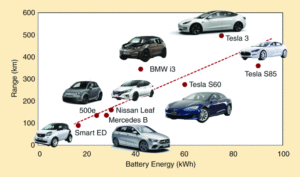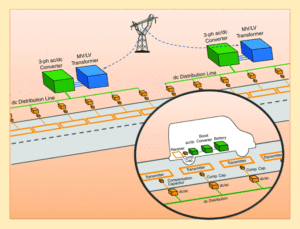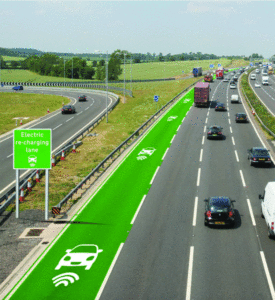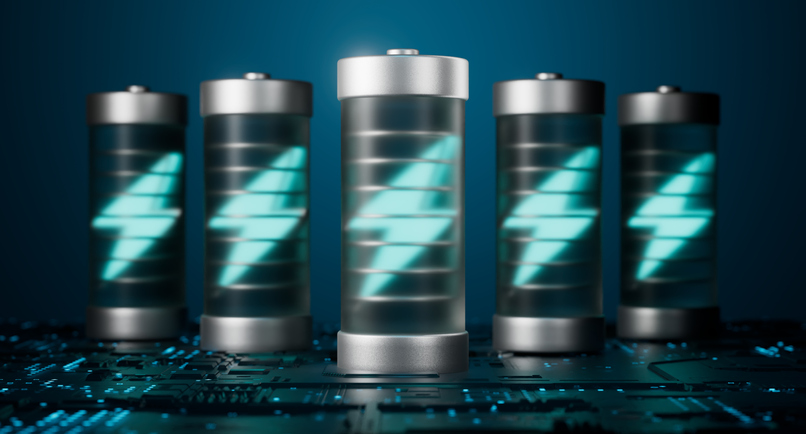Contrary to common assumptions, the challenges associated with recharging electric vehicles (EVs) trace back to the 20th century. The automotive arena featured a triad of electric, gasoline, and steam-powered vehicles during that era. Due to their limited range, electric cars excelled in short urban hops and graced electric taxis in bustling cities like Paris and London. However, the discovery of abundant oil reserves offered cost-efficient fuel, paired with expanding road networks and combustion engine innovations, dealt a blow to both steam and electric rivals.
Fast-forward to today. Now that governments worldwide have set ambitious goals to phase out gasoline-powered cars, will the near future have a scenario in which the streets of our cities will be noiseless, apart from the quiet rustle of electric motors?
That is the question in a recent IEEE Power and Energy Magazine article, in which the authors outline the state of technology for electric vehicle (EV) charging. The article also provides an overview of practical issues and safety considerations regarding EVs.
Vehicles need energy, of any form, to be driven. As electricity generation shifts more toward renewable sources like solar and wind, the authors predict the upstream emissions for EVs will decrease even further. Though the higher efficiency of EVs and their reduced carbon footprint compensate for the lower energy density, one element seems to be the primary concern: battery capacity.

The declared ranges (kilometers) of popular electric cars versus the battery energy available for that vehicle (kilowatt-hours).
As expected, the greater the battery capacity, the longer the range. EVs that deviate from the linear trend shown in the chart may feature different aerodynamics or have different body mass.
Charging Infrastructures
Today’s charging infrastructure for EVs leaves much to be desired. Recharging a car takes at least 30 minutes and often requires an hour of valuable time. This is not a problem when cars are parked at home overnight, but when people are out and about, they would rather spend their time elsewhere than at a charging station.
The stationary wireless charge calls for transmitter pads that can charge the EV when parked at home or at traffic lights. In some cases, this application is also referred to as stationary wireless charging. The dynamic wireless charge involves embedding coils into roadways that power EVs as they drive overhead. The wireless charge may be the optimum solution to charging EVs in the long run—and the EV industry and local roadways departments may be asked to invest more in wireless charging.
According to the researchers, significant experiments have already confirmed the usability of dynamic wireless systems for both light- and heavy-duty vehicles from the point of view of electrical infrastructure. Siemens has proposed a conductive charging solution targeted at heavy transport, called the eHighway. Despite the successful testing of this solution, the required infrastructure introduces significant installation and maintenance problems, especially in the presence of tunnels and viaducts. Some automakers are focusing on standardizing battery packs and their in-vehicle housing to perform battery swapping.
At present, even the most well-established wired charging of EVs is far from perfect. The rise of competing technical standards and proprietary solutions may have complicated things for EV owners. Knowing there are so many different wired charging technologies and plugs may discourage drivers from investing in an EV.
Disability advocates have raised concerns about the charging procedure, which they allege to be challenging to individuals with disabilities. In addition, there have been cases where charging stations have been vandalized and rendered unusable. A further worry of EV drivers and vehicle occupants is range anxiety. The fear that the EV has insufficient capacity to reach its destination has been considered one of the significant barriers to the large-scale adoption of all-electric cars.
Wireless Charging
Wireless power transmission has been studied for centuries, as noted by the authors. Nikola Tesla (1856–1943) conducted experiments on long-distance wireless electric energy transmission and presented a contactless system at the World Exposition of Chicago in 1893. Today, WPT covers several technologies in a wide range of applications, power, and distances; the resonant inductive power transmission (IPT) seems to be the most effective for EV charging. This technology generates a charging magnetic field around a charging pad and activates when an EV with a corresponding receiver is above it. In the case of dynamic WPT, consecutive charging pads can form a charging lane to allow the EV user to charge as they drive.

Electrical system for the dynamic IPT
The transmitter pads can be embedded into the ground and supplied by the power grid via a power conversion chain and the contactless charge makes the system more reliable and noninvasive in urban areas. The future implementation of electrified road infrastructures would extend the range of EVs, placate the perceived range anxiety, and improve the market penetration of EVs.

Possible look of a future charging highway lane.
As the authors point out, the main function of such systems is not recharging but powering. The goal is to maintain the level of the vehicle’s battery charge throughout an entire long-distance journey. In this way, once exiting powering highway sections, the available energy will still be sufficient to reach the ultimate destination of the trip or a charging station in the urban area. It is important to stress that existing lithium-ion battery packs used in most modern EVs are compatible with wireless charging and do not require any modifications or special chemistry. The wireless power transfer works independently of the battery technology.
Practical Issues & Safety Considerations
In the latter half of the article, the authors stress important practical and safety issues. The deployment of wireless charging is still to be standardized. The charging pad, for example, has been proposed in very different designs. Smart freeways and EVs, supported by the dynamic IPT technology, may be the sustainable transportation alternative, but will only be possible if supported by the political choices of governments and with the interest of private and public institutions.
Because the EV occupants do not leave the vehicle during the dynamic wireless inductive charge, attention must also be paid to the possible adverse effects of the electromagnetic field on the driver and the passengers. Studies indicate that the magnitude of electromagnetic fields to which EV occupants or pedestrians may be subjected is below the basic restriction, under all realistic operating conditions.
By eliminating the need for complex cables, plugs, or charging stations, charging is transformed into a mere parking maneuver, which helps with accessibility. The discreet nature of the wireless charging approach also minimizes vulnerability to vandalism, thus ensuring a resilient and reliable charging experience.
Future Innovation
The transition toward electric mobility is critical to reducing greenhouse gas emissions and mitigating climate change. As outlined in this article, advancements in battery technology and charging infrastructure will facilitate the widespread adoption of EVs. Realizing the full potential of EVs will require continued innovation across batteries, charging technology, and infrastructure.
According to the authors, key areas for additional research include increasing battery capacity and density, improving charging speeds, standardizing connections, and developing efficient on-road charging systems. As wireless and inductive charging matures, range anxiety will subside, and EVs will become the sustainable and convenient option for green mobility.
Interested in acquiring full-text access to this collection for your entire organization? Request a free demo and trial subscription for your organization.
Interested in expanding your knowledge on Electric Vehicles? IEEE offers continuing education with the Transportation Electrification Course Program to smartly implement digital tools into your organization.




